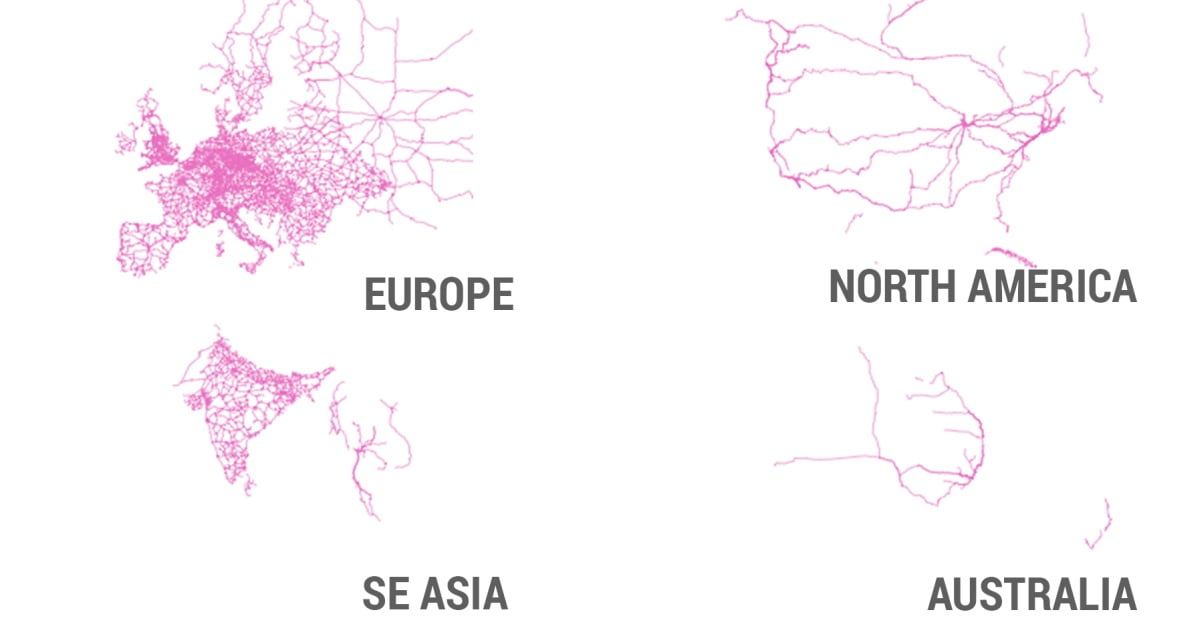A look at how far passenger railway passenger lines spread around the world in the past 200 years.

The evolution of the railroad started with the combination of the steam locomotive and a permanent travel way on metal rails. Experiments in this area in the first quarter of the 19th century led to the construction of the Liverpool and Manchester Railway, which, when it opened in 1830, constituted the first fully timetabled railway service with scheduled freight and passenger traffic relying entirely on the steam locomotive for traction. This moment in history can be regarded as the inauguration of the railway era, which continued until World War I. During this time railways were built across all the countries and continents of the world, opening up vast areas to the markets of industrial society.
The following infographic TraveGeo shows how far different parts of the world have developed since the introduction of the first railway in terms of density of passenger lines (click to enlarge).

The first thing that srikes the eye is how dense railway networks are in India and Europe, and how rare they are in North America and Australia. Also, note how dense Cuba’s rail networks are – it could be regarded as a positive thing hadn’t they been created for transporting sugar cane from plantations where slaves produced it. To give you an idea of how sweetly rewarding this lucrative business was: when Spain built the railroad in Cuba, they hadn’t started building railroads in Spain yet! In many other parts of the world, too, (e.g. Australia) most railways were built for transporting crops to ports, and were later repurposed for passengers. Business first, as always…
Sources: 1, 2, 3
